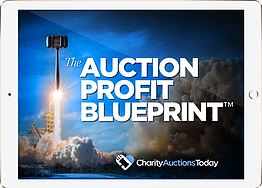DOWNLOAD The Auction Profit Blueprint
The 4 tools BIG organizations use every time to skyrocket auction profits!
The Step-By-Step Guide to stop leaving thousands on the table.
Discover how to find potential donors and convince them to donate. CharityAuctionsToday offers tips on donor prospecting and donor cultivation.

Fundraising is a vital part of any non-profit organization’s operations. It’s the lifeblood that keeps the mission alive and the programs running.
But finding potential donors can be a daunting task. It requires strategic planning, effective communication, and a deep understanding of your target audience.
In this guide, we’ll explore various fundraising opportunities. We’ll delve into donor acquisition strategies and how to cultivate relationships with your donors.
We’ll also provide actionable tips on how to identify potential donors and engage them effectively. Whether you’re a seasoned fundraiser or a beginner, this guide will equip you with the knowledge you need.
So, let’s dive in and discover how to unlock new fundraising opportunities and build a sustainable donor base.
Donor acquisition is the process of identifying and attracting new donors to your cause. It’s a critical aspect of fundraising that ensures the sustainability of your organization.
But why is donor acquisition so important? The answer lies in the numbers. Studies show that retaining an existing donor is less costly than acquiring a new one. However, donor attrition is a reality that organizations must face. This especially true in light of Giving USA’s report that individual giving was down 2.4% in 2023.
This is where donor acquisition comes in. It helps replenish your donor base and maintain a steady flow of funding. It’s about reaching out to potential donors, introducing them to your cause, and inspiring them to contribute.
Here are some key points to remember about donor acquisition:
Fundraising opportunities are everywhere. They can be found in your local community, online platforms, corporate partnerships, and even among your existing supporters. The key is to identify these opportunities and leverage them effectively.
One of the most common fundraising opportunities is events. These can range from small community gatherings to large-scale galas. Events not only raise funds but also increase visibility and engage supporters. They can be a great way to introduce your organization to potential donors.
Online fundraising is another significant opportunity. With the rise of social media and digital platforms, reaching a global audience has never been easier. Online fundraising can include crowdfunding campaigns, virtual events, and online auctions.
Here are some other fundraising opportunities to consider:
Remember, the best fundraising opportunities are those that align with your mission and resonate with your donors.
Understanding the characteristics of potential donors is crucial in your fundraising efforts. It helps you tailor your approach and communicate effectively. Here are some key characteristics to consider.
Firstly, potential donors often have a personal connection to your cause. They may have experienced the issue you’re addressing or know someone who has. This connection makes them more likely to support your organization. Therefore, it’s important to share stories that resonate with their experiences.
Secondly, potential donors are usually socially conscious. They care about making a difference and are often involved in other charitable activities. Showcasing the impact of their donation can motivate them to contribute.
Lastly, potential donors value transparency and trust. They want to know how their funds are being used and the difference they’re making. Regular updates and open communication can help build this trust.
Social media platforms offer a powerful way to reach potential donors. They allow you to share your story, engage with your audience, and drive traffic to your donation page. Here’s how you can leverage social media for donor acquisition.
Don’t get discouraged if you have little engagement as you start posting. Remember, consistency is key in social media. Regularly posting and engaging with your audience can help you build a strong online presence and attract more donors. If you have the budget for it, social media ads can also help you reach more people.
Storytelling is a powerful tool for engaging potential donors. It allows you to connect with your audience on an emotional level, making your cause more relatable and compelling. Here’s how you can use storytelling to attract donors.
Firstly, focus on the impact of your work. Share stories about the people or communities you’ve helped. Highlight the difference your organization is making. This can help potential donors understand the value of their contribution and motivate them to support your cause.
Secondly, make your stories personal. Use real-life examples and testimonials. Show your donors the faces behind the numbers. This can help create a personal connection between your donors and your cause, increasing their likelihood to donate.
Lastly, use a variety of mediums to tell your stories. This could be through blog posts, videos, social media posts, or newsletters. Diversifying your storytelling mediums can help you reach a wider audience and engage different types of donors.
Creating a compelling case for support is crucial in attracting potential donors. It’s about clearly communicating why your cause is worth supporting and what impact their donation will make. Here are some tips to help you craft a persuasive case for support.
Start by defining your mission and vision. Explain what your organization does, why it’s important, and what you aim to achieve. This gives potential donors a clear understanding of your cause and its significance. Make sure your mission and vision are compelling and resonate with your target audience.
Next, highlight the impact of donations. Show potential donors how their contributions will be used and the difference they will make. Use concrete examples and success stories to illustrate this. This not only shows transparency but also helps donors visualize the impact of their support, making them more likely to donate.
Finally, make your case for support emotionally engaging. Use storytelling, images, and personal testimonials to connect with your audience on an emotional level. This can help create a sense of empathy and urgency, motivating potential donors to take action.
Donor cultivation is a critical aspect of fundraising. It’s not just about acquiring new donors, but also nurturing relationships with existing ones. This process involves consistent communication, appreciation, and engagement to build trust and loyalty.
A well-cultivated donor is more likely to become a repeat donor. They may also increase their donation amounts over time, or even become advocates for your cause, spreading the word to their own networks. This can significantly enhance your fundraising opportunities and donor acquisition efforts.
Keep in mind that donor cultivation is a long-term strategy. It requires patience, persistence, and genuine interest in your donors. By investing time and effort in building meaningful relationships with your donors, you can create a sustainable donor base that supports your cause for years to come. Don’t be tempted by fast track ideas like buying or sharing another organization’s email list or other tactics that aren’t 100% above board.
Fundraising events are a great way to engage potential donors. They provide an opportunity to showcase your cause, interact with supporters, and raise funds. However, organizing a successful event requires careful planning and execution.
Here are some tips for organizing successful fundraising events:
The success of your event is not just measured by the funds raised, but also by the relationships built and the awareness generated for your cause.
In today’s digital age, online fundraising platforms have become a popular tool for donor acquisition. They offer a convenient way for donors to contribute and allow organizations to reach a wider audience.
Here are some benefits of using online fundraising platforms:
However, it’s important to choose a platform that aligns with your organization’s needs and goals. Consider factors such as fees, ease of use, and the level of customer support provided. Remember, the effectiveness of online fundraising platforms largely depends on how well they are utilized in your overall fundraising strategy.
Following up with donors after they’ve made a contribution is a crucial part of donor retention. It’s an opportunity to express gratitude and to keep them engaged with your cause.
A simple thank you note can go a long way in making donors feel appreciated. But don’t stop there. Regular updates on how their donations are making a difference can reinforce their decision to support your cause.
Remember, retaining donors is often more cost-effective than acquiring new ones. By following up effectively, you can turn one-time donors into repeat supporters, ensuring a steady stream of funding for your organization.
Building a sustainable donor base is a continuous process that requires strategic planning, effective communication, and a genuine appreciation for your supporters. It’s about creating meaningful relationships that inspire ongoing support for your cause. Every donor is a valuable part of your organization’s mission. By implementing the strategies discussed in this guide, you can enhance your fundraising efforts, attract new donors, and cultivate lasting relationships that will help your organization thrive.
DOWNLOAD The Auction Profit Blueprint
The 4 tools BIG organizations use every time to skyrocket auction profits!
The Step-By-Step Guide to stop leaving thousands on the table.

